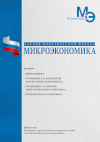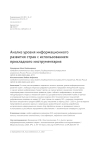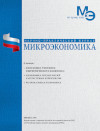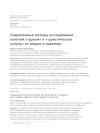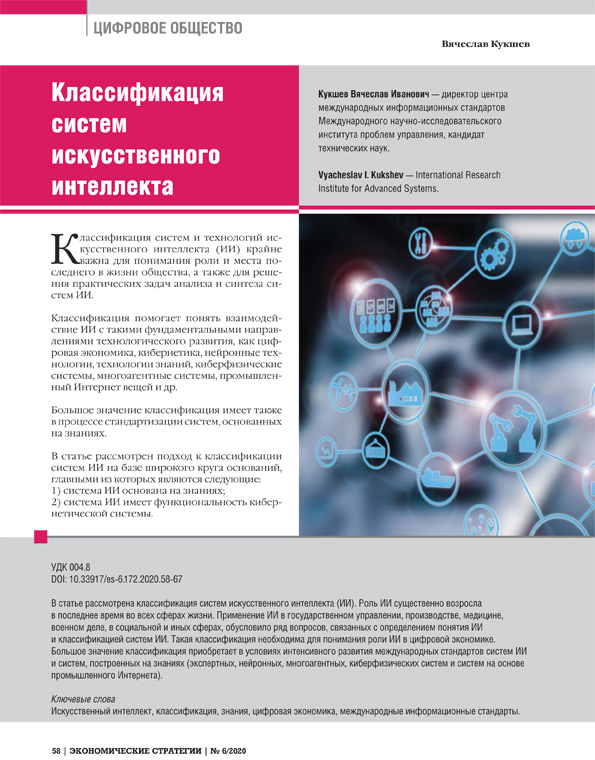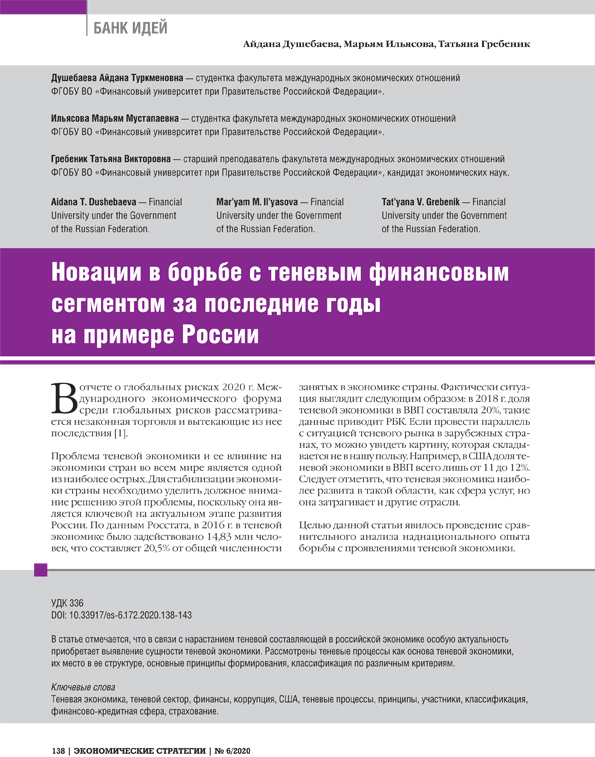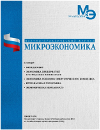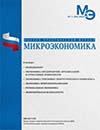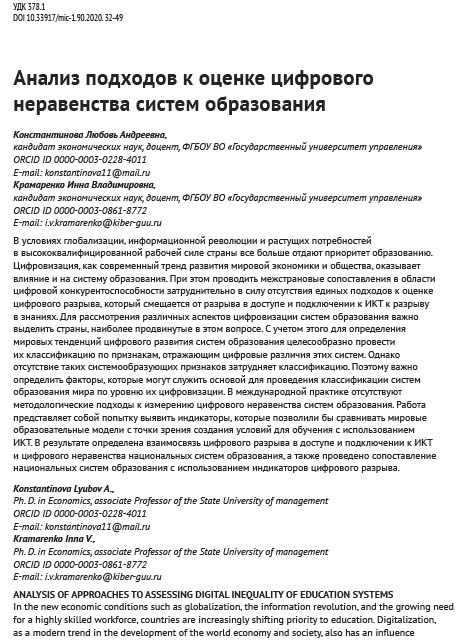Analysis of the level of information development of countries using applied tools
DOI: 10.33917/mic-2.109.2023.34-47
The article discusses some aspects of the analysis of the level of information development of countries using digital development indices. A methodological approach to assessing the level of digitalization is proposed. The emphasis is placed on assessing the level and dynamics of indicators characterizing the technological development of countries in the field of digitalization, using the example of the international global communications index GCI, developed by Huawei. Within the framework of the study, the values of the GCI index, technological indicators of digitalization included in the GCI index, the rank of the country according to the GCI index and the values of the Gross Domestic Product (GDP) per capita for the period 2015-2020 were considered. An interactive information panel was developed to visually represent the dynamics of data and the implementation of comparative analysis. Russian software, the Loginom analytical platform, was used for data processing and analysis.
References:
1. Konstantinova L. A., Kramarenko I. V. Analysis of approaches to the assessment of digital inequality in education systems. Microeconomics. 2020;1(90):32-49. (In Russ.).
2. Ranking of countries by the level of network readiness. NRI index data and its components. URL: https://nonews.co/directory/lists/countries/networked-readiness-index
3. GCI index data and its components. URL: https://www.huawei.com/minisite/gci/en/country-rankings.html
4. World Bank data on GDP per capita. URL: https://data.worldbank.org/indicator/NY.GDP.PCAP.PP.CD?locale=ru&locations=null
5. Kolokolov A. Make the data say: How to make a business dashboard in Excel. Data Visualization Guide. Moscow: Alpina PRO Publishing House, 2023. 244 p. ISBN 978-5-206-00079-5. (In Russ.).
6. Paklin N. B. Business analytics: from data to knowledge [Text]: textbook / N. Paklin, V. Oreshkov. 2nd ed., supplement and revision. St. Petersburg, 2010. -701 p.: ill., table.; ISBN 978-5-49807-751-2. (In Russ.).
7. Pisareva O. M. Methods of forecasting the development of socio-economic systems. Textbook. M.: Publishing house «Higher School», 2007. (In Russ.).
8. The official website of the analytical platform LOGINOM. URL: https://loginom.ru /?ysclid=lfdj6pjmme274123219
9. Zolov O. N. Problems of using GDP as an indicator of the effectiveness of assessing socio-economic development / O. N. Zolov, N. N. Matnenko // Issues of economics and management. 2019;5(21):1-6. URL: https://moluch.ru/th/5/archive/138/4418 / (In Russ.).
10. Dronov V. N., Makhrova O. N. Broadband Internet access as a factor of socio-economic development // Economics and management. 2016;9(131). URL: https://cyberleninka.ru/article/n/shirokopolosnyy-dostup-v-internet-kak-faktor-sotsialno-ekonomicheskogo-razvitiya (In Russ.).
11. Measuring the Information Society: Report 2015. URL: http://www.itu.int/dms_pub/itu-d/opb/ind/D-IND-ICTOI-2015-SUMPDF-R.pdf
12. Kaledin P. ITU: measuring the information society // The first mile. 2016;5(58):38-44. (In Russ.).


